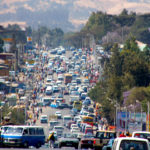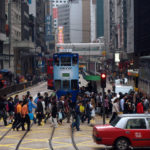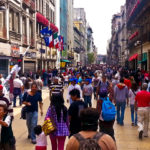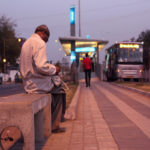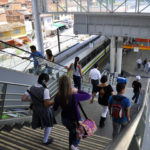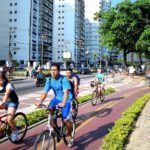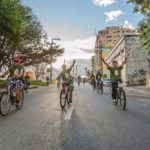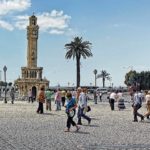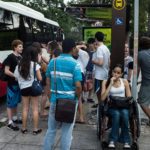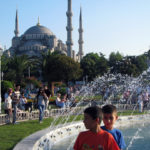Posts tagged with 'accessibility'
Known for its beautiful natural landscapes, Christ the Redeemer statue, and Copacabana beach, Rio de Janeiro is an iconic city. Citizens’ ability to access these and local opportunities, though, has been limited in the past due to increased reliance on ...

International Women’s Day is on March 8, 2015, and this year’s theme is “Make It Happen.” Nowhere do women make it happen more than they do in cities. In cities all around the world, women are working to improve the ...

For São Paulo, the largest city in the southern hemisphere, making sure that residents have access to reliable transport options at all hours of the day is a particularly acute issue given the size and population of the city. Starting ...

As cities worldwide grow and evolve, so too is the urban landscape changing for cyclists. While congested and chaotic streets still remain a persistent challenge for some cities, many others have recognized the need for robust cycling infrastructure and are ...

East Africa doesn’t make a lot of headlines for its sustainable transport achievements. That’s changing, as its cities are starting to pioneer innovative new projects to bring urban Africa into the spotlight for sustainable development. The challenges in the region ...

What will the city of the future look like? How can we unlock the potential of urbanization to create safe, accessible and prosperous societies? At Transforming Transportation 2015 – the annual conference co-organized by the World Resources Institute and the World Bank– we learned about ...

Previously on TheCityFix, we took you through the initial steps of EMBARQ and IDEO’s project to explore how human-centered design thinking can be put to work for sustainable urban mobility. We’re asking a bold question – what if there were ...

It is increasingly recognized that cities are both powerhouses of economic growth and the primary drivers of economic prosperity, worldwide. This holds true for urban India as well, where exponential growth is expected not only in existing metropolitan areas, but ...

Latin America’s rate of urbanization peaked in the 1960s and 1970s, during which the region’s cities saw unprecedented rural to urban migration. In the following decades, violence in many of these population-drained rural areas accelerated the flow of rural migrants ...

Transforming Transportation (#TTDC15) is the annual conference co-organized by EMBARQ, the sustainable urban transport arm of the World Resources Institute’s (WRI) WRI Ross Center for Sustainable Cities, and the World Bank. This year’s conference focuses on Smart Cities for Shared Prosperity, and takes place on ...

Eighty-five percent of Brazilians live, work, and play in cities. As such, urban mobility is a fundamental driver of quality of life for the vast majority of the country, enabling access to jobs, healthcare, schools, and other everyday needs. In ...

How can cities harness urban mobility solutions to become more livable? The second annual Livable Cities Symposium – co-hosted by EMBARQ Turkey and the İzmir Development Agency (İZKA) – addressed this question by gathering experts from Turkey and around the ...

When deciding between modes of transport, travelers consider several variables, typically including convenience, cost, time, reliability, and comfort. Another consideration – which is particularly important for women – is perceived safety. No one prefers public transport if it requires walking ...

TheCityFix recently interviewed Tom Rickert – Founder and Executive Director of Access Exchange International – to learn more about how cities can improve mobility for disabled persons. Access Exchange International was founded in 1990 to promote accessible public transport for ...

A focus on sustainable development can help Istanbul preserve its rich cultural history. For example, Istanbul’s Historical Peninsula – a UNESCO World Heritage site – contains 295 pedestrianized streets that have helped to increase the vibrancy, safety, and accessibility of ...

Page 6 of 13« First...567...10...Last »










